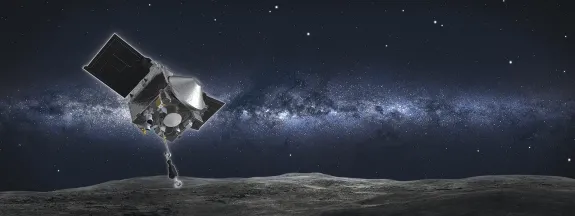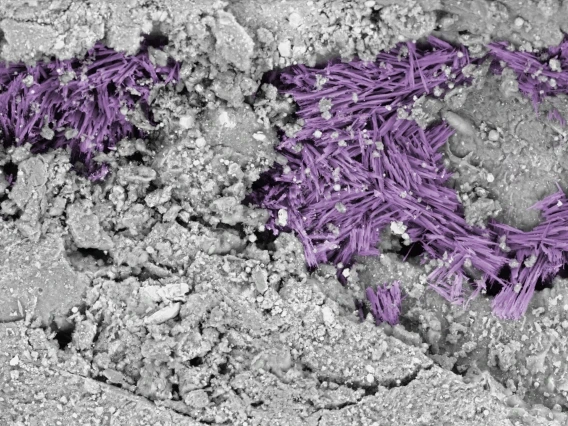
Information for the Media
Mission Overview
Led by the University of Arizona Lunar and Planetary Laboratory, OSIRIS-REx is the first U.S. mission to retrieve a sample from an asteroid and return it to Earth for study. The material it returned is the largest sample brought back from space since the Apollo moon landings in the 1960s and '70s and will help ensure that the University of Arizona remains at the forefront of planetary exploration.
Launched in 2016, the OSIRIS-REx spacecraft traveled to Bennu – a near-Earth asteroid whose makeup may record the earliest history of our solar system – to take a sample of its surface. Classified as a carbonaceous chondrite, Bennu is the type of asteroid that is believed to be rich in organic molecules. During an extensive surveying campaign, the spacecraft's instruments studied the asteroid up close and discovered that it contains significant amounts of water-rich minerals.
Bennu may contain the molecular precursors that gave rise to life and Earth's oceans. Bennu is also one of the more potentially hazardous asteroids, with a relatively high probability of impacting Earth late in the 22nd century.
In October 2020, OSIRIS-REx descended to the surface of Bennu, picked up material and stowed it in its sample return capsule. The spacecraft successfully jettisoned the capsule during a close Earth flyby on Sept. 24, 2023. The capsule landed in the desert at the Utah Test and Training Range southwest of Salt Lake City in the morning hours of the same day. From the landing site, it was then transported to NASA's Johnson Space Center in Houston, where the capsule was opened and the sample retrieved for scientific analysis.
The University of Arizona-led science team, which includes members working all around the world, received 25% of the sample, some of which will be studied in the university's Kuiper-Arizona Laboratory for Astromaterial Analysis. Another portion was set aside for the future, so researchers can take advantage of advanced instruments and methodologies that are yet to be developed.
Detailed insights into the physical and chemical properties of asteroids like Bennu are critical to design and plan impact mitigation missions should they ever become necessary. Finally, asteroids like Bennu contain natural resources such as water, organics and precious metals. In the future, these asteroids may one day fuel the exploration of the solar system by robotic and crewed spacecraft.
Stay tuned for upcoming research by the OSIRIS-REx mission scientists.
Media Resources
Multimedia
- Photos and B-roll
- Mini documentary: "Bennu's Journey"
- OSIRIS-REx mission animation
- More photo galleries
Media Contacts & Information
Daniel Stolte
University of Arizona, Science Writer
520-626-4402
stolte@arizona.edu
Mikayla Mace Kelley
University of Arizona News, Science Writer
520-621-1878
mikaylamace@arizona.edu




